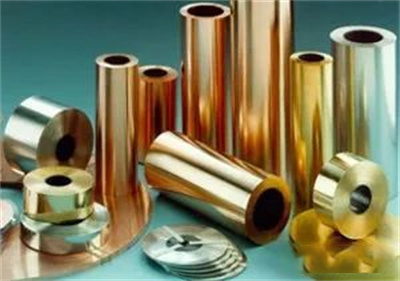Briefly describe the characteristics of copper alloy free forging process
The macrostructure of copper alloy ingot can be divided into three regions: chilled region, columnar crystal region, and equiaxed crystal region. The chilled zone is a layer of the shell that is close to the mold wall of the ingot, and its thickness is relative to several grains. The equiaxed crystal region is located in the central area of the ingot and is composed of relatively coarse equiaxed grains; the columnar crystal region is located between the two and consists of columnar grains perpendicular to the mold wall and parallel to each other. The width of the above three crystal regions varies with the chemical composition of the alloy, the casting method, and the process. By adjusting the casting process, a single equiaxed crystal or single columnar crystal ingot can be obtained. The columnar crystal structure has a great influence on the performance of the ingot. There are often low melting point eutectic structures and inclusions, pores, and porosity at the junction of the columnar crystal and the equiaxed crystal. There may also be intergranular cracks, which are a fragile place for the ingot. When the ingot is pressed worked, it tends to crack along this point. Therefore, in the ingot used for plastic deformation, the columnar crystal region should be as small as possible, and the equiaxed crystal region should be as wide as possible, especially to avoid the appearance of a coarse columnar crystal structure.
Controlling the structure of the ingot to form a uniform and fine equiaxed grain structure can effectively improve the deformation performance of the ingot. Adding refiners to the casting melt is an effective way to refine grains. For ingots used for plastic processing, especially free forging, the content of harmful impurities (such as lead, bismuth, etc.) should also be strictly controlled, otherwise, under the action of tensile stress, cracks will easily occur where low-melting-point impurities gather.

According to the characteristics of copper alloy ingots, the precautions for free forging are:
(1) The forging temperature range of copper alloys is narrow. In order to avoid the rapid drop of the billet temperature during the forging process and fall into the brittle zone, the hammerhead, anvil surface, and operating tools such as punches, mandrels, and tire molds should be removed before forging. , drain pan, etc. are preheated to above 200 ℃. The action should be brisk during operation, and the blank should be turned frequently on the anvil surface. When punching, the punch should be preheated to the highest possible temperature, so that the temperature of the metal in contact with the punch will not drop too much, so as to avoid cracks on the edge of the hole. During forging, if the temperature of the billet drops to the brittle zone, the forging should be stopped immediately, and the forging should be resumed after reheating.
(2) The copper alloy is soft in texture, and the extruded edges and corners are relatively sharp during drawing. In order to avoid folding defects, the edges of the anvils for forging copper alloys should be rounded by more than R10, and the amount of feeding and pressing during operation The ratio should be appropriately increased, which can be maintained at 0.7 to 1.0, and the hammering should be as fast as possible. When forging a flange with holes, if the hole is punched first, and then the head is upset in the tire mold, it is easy to produce folding defects on the inner wall of the hole. Therefore, when forging a copper alloy flange with holes, the upset head should generally be upset in the mold first. After punching, place a mandrel in the blank hole and upset the head in the tire mold.
(3) Brass is more sensitive to internal stress, and it is easy to crack by itself when the internal stress is large. When forging long-axis brass forgings, the forging should be turned around repeatedly, and the forgings should be turned evenly, so that the deformation temperature difference of each section of the forgings is not too large, so as to reduce the internal stress of the forgings and obtain a relatively uniform structure. Such forgings should be annealed in time after forging.
The above is all about the copper alloy, I hope it can be helpful for you to read.
